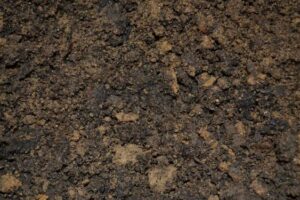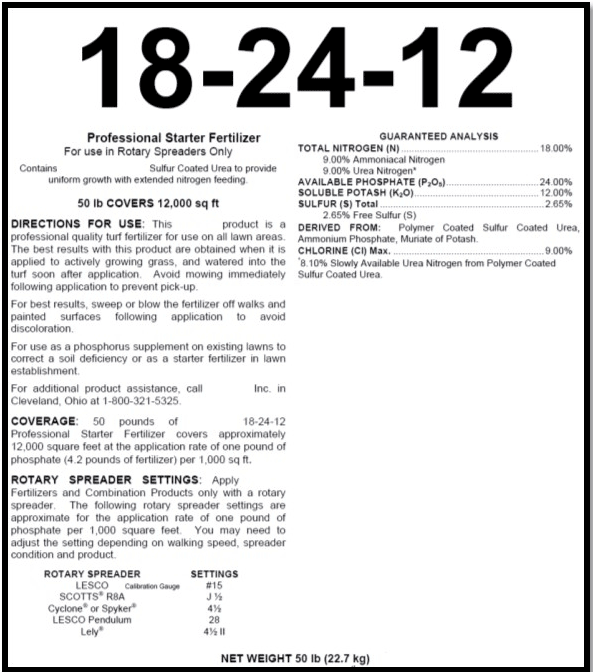Fertilizer label 18-24-12
If plants don’t get the necessary nutrients, they will not grow effectively. Soil tests were specifically developed to identify situations where nutrient supply is inadequate so a gardener can supplement the soil with fertilizer. Now is the time to find out the make-up of your soil so you can provide optimal conditions for your new and existing plants.
What You Will Learn from a Soil Test
Soil testing will provide specific information regarding your soil conditions. Soil nutrient levels for pH, nitrogen, phosphorus and potassium are revealed including recommendations for limestone and fertilizer application. Specific comments explaining how to accomplish recommendations are also provided.

All soil is not created equal. Tests will tell you about your soil condition.
Understanding the Soil Test Report
Soil pH affects nutrient availability, deficiency or toxicity. It is reported using a 0-14 point logarithmic scale showing the acidity or alkalinity of the soil. A low pH level indicates more acidic soil with a high pH as more basic (alkaline) soil. Often Pennsylvania soils are found to be acidic. A pH of 4-5 is too acidic for most crops and an 8-9 range is generally too basic. Soil pH can be modified with use of limestone to remedy too-acidic conditions or sulfur for high alkaline situations.
Nitrogen levels in the soil can affect plants in a variety of ways. For example, too much nitrogen can injure roots or acidify the soil. Nitrogen deficiencies can present themselves through yellowing of mature leaves or slow plant growth.
Phosphorus deficiencies can slow plant growth, compromise the production of flowers, fruits and seeds or cause discoloration in older leaves on plants. High phosphorus levels interfere with iron availability and decrease the uptake of copper and zinc.
Lack of potassium in the soil can adversely affect stem strength, disease sensitivity, and taste or quality of fruits and vegetables.
Reading Fertilizer Labels
Fertilizer labels show quantities of nitrogen, phosphate (phosphorus) and potash (potassium), for example a 50 lb. bag of fertilizer may show an analysis of 18-24-12. In this example, the 18 reveals the fertilizer contains 18% or 9 lbs. of nitrogen. The phosphate content is shown by the 24 indicating that 24% or 12 lbs. is contained. The last number, the 12, reports potash content as 12% or 6 lbs. These numbers are used to make fertilizer selections.
Soil testing can be accomplished by following a few simple steps.
- Purchase a soil test kit at the Penn State Extension Office (Montgomery County 4-H Center, 1015 Bridge Road, Collegeville PA, 610-489-4315) for $9.00.
- Use a clean plastic container for the soil. Take at least 10 random samples of your soil. Sample at a depth of 6-8” for gardens and 3-5” for lawns.
- Mix the samples thoroughly.
- Transfer the required amount of soil to the sample bag.
- Fill out the forms in the soil kit and send the sample to the lab indicated on the form.
- When the report arrives, follow the recommendations for limestone and fertilizer application.
Understanding your soil and utilizing the recommendations from a soil test can greatly enhance the desirability, beauty, and productivity of your landscape!
This is great information for do-it-your-selfers. Whitehouse Landscaping can also take care of your soil test and meet with you to discuss the full results and recommendations. Whitehouse Landscaping has years of experience in promoting healthy soil and achieving optimum plant vigor and healthy growing conditions for your lawn and landscaping plantings. Contact us today for a consultation.
Darlene Hofmeister volunteers as our guest blogger. She is a lifelong gardener, and has recently earned credentials to become a Master Gardener through Penn State Cooperative Extension’s program. Her love of education and desire to share knowledge with others continues past her 35-year teaching career.

